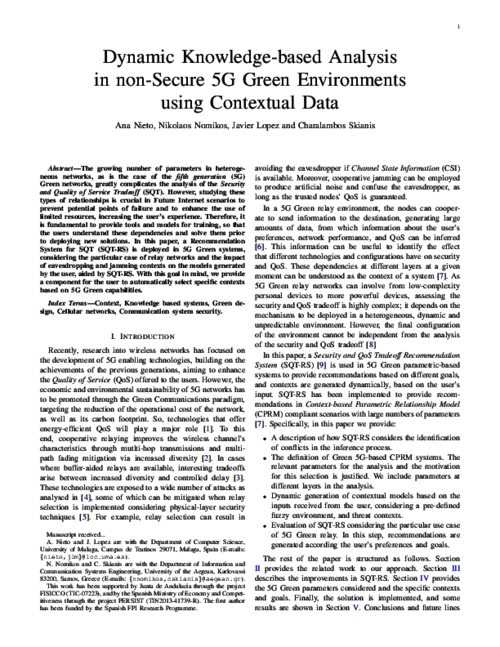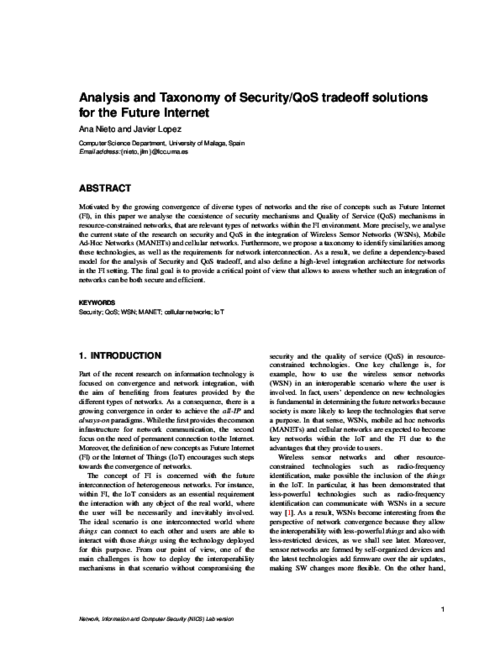 ]
] IEEE Systems Journal, vol. 11, issue 4, no. 99, IEEE, pp. 2479-2489, 12/2017. DOI
Abstract
The growing number of parameters in heteroge- neous networks, as is the case of the fifth generation (5G) Green networks, greatly complicates the analysis of the Security and Quality of Service Tradeoff (SQT). However, studying these types of relationships is crucial in Future Internet scenarios to prevent potential points of failure and to enhance the use of limited resources, increasing the user’s experience. Therefore, it is fundamental to provide tools and models for training, so that the users understand these dependencies and solve them prior to deploying new solutions. In this paper, a Recommendation System for SQT (SQT-RS) is deployed in 5G Green systems, considering the particular case of relay networks and the impact of eavesdropping and jamming contexts on the models generated by the user, aided by SQT-RS. With this goal in mind, we provide a component for the user to automatically select specific contexts based on 5G Green capabilities.

Security and Communication Networks (SCN) Journal, vol. 7, issue 12, Wiley-Blackwell, pp. 2778-2803, 2013. DOI
Abstract
Motivated by the growing convergence of diverse types of networks and the rise of concepts such as Future Internet (FI), in this paper we analyse the coexistence of security mechanisms and Quality of Service (QoS) mechanisms in resourceconstrained networks, that are relevant types of networks within the FI environment. More precisely, we analyse the current state of the research on security and QoS in the integration of Wireless Sensor Networks (WSNs), Mobile Ad-Hoc Networks (MANETs) and cellular networks. Furthermore, we propose a taxonomy to identify similarities among these technologies, as well as the requirements for network interconnection. As a result, we define a dependency-based model for the analysis of Security and QoS tradeoff, and also define a high-level integration architecture for networks in the FI setting. The final goal is to provide a critical point of view that allows to assess whether such an integration of networks can be both secure and efficient.
